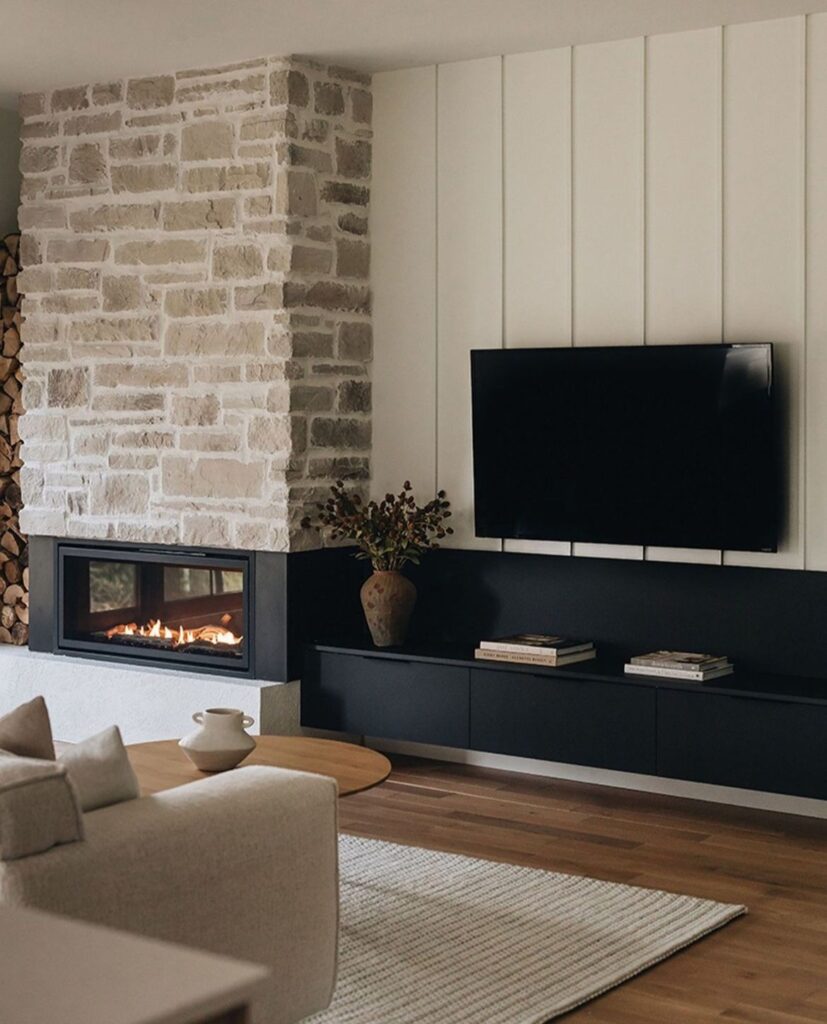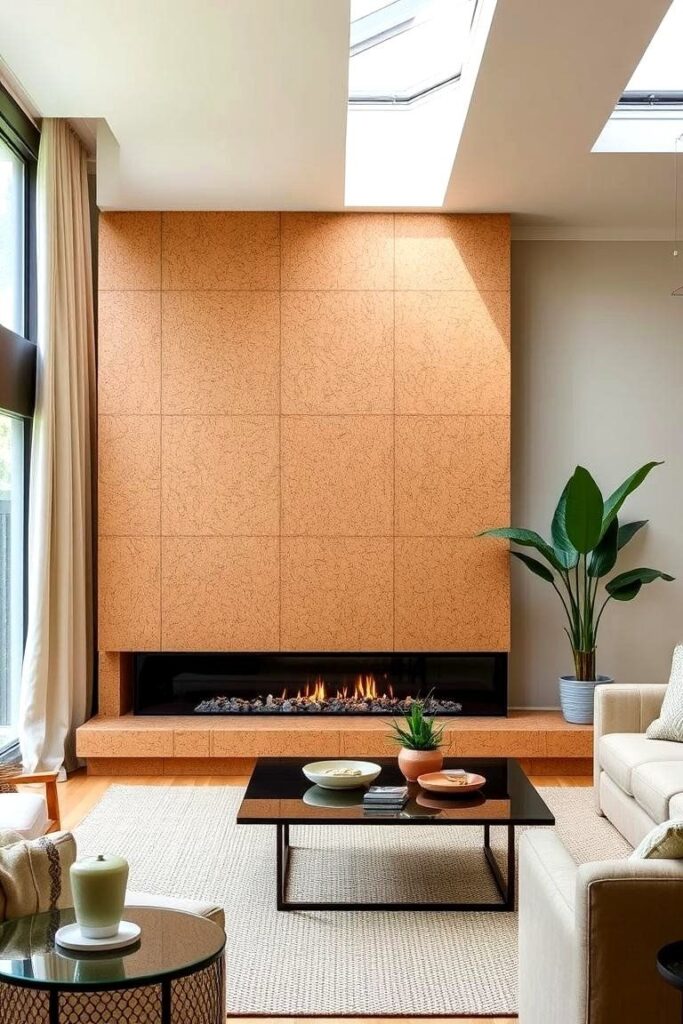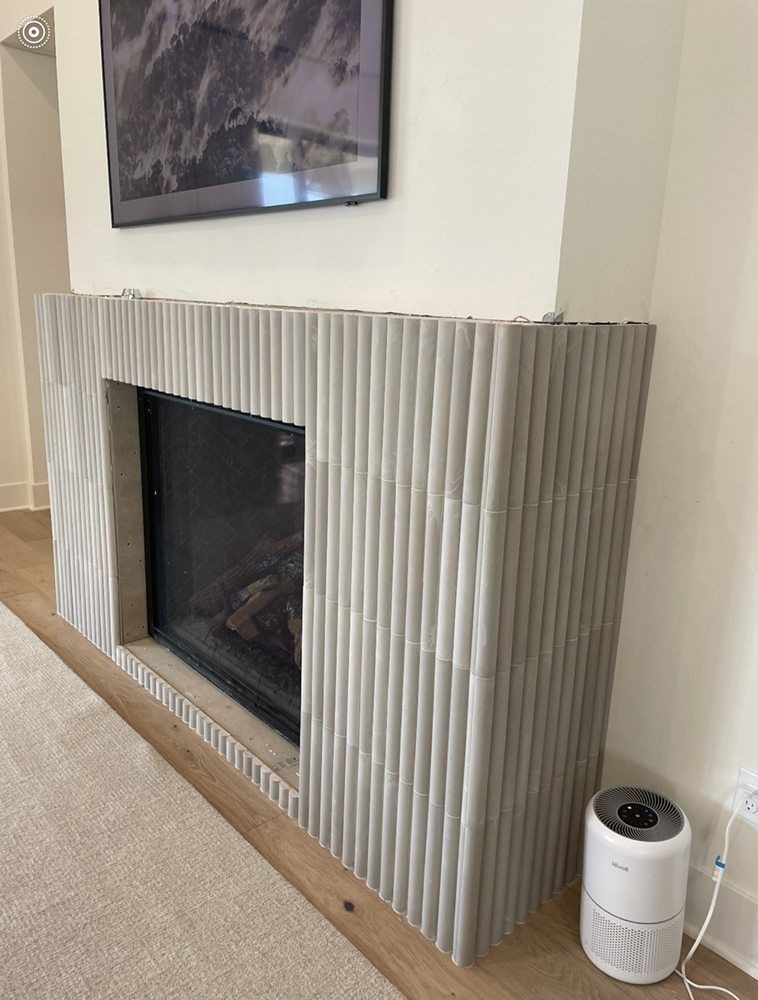The fireplace has always been the heart of the home – a gathering place that offers both warmth and character. From classic mantels to sleek modern inserts, its design has evolved with every era. Today, as Canadians become increasingly aware of their environmental impact, homeowners are reimagining the fireplace once again. An eco-friendly wall design with a fireplace blends comfort with sustainability, transforming this timeless feature into a cleaner, smarter, and more efficient centerpiece.
Understanding Eco-Friendly Fireplace Wall Design
Creating an eco-conscious fireplace wall is about making deliberate choices – from the heating source itself to the materials that frame it. It’s a balance between form, function, and environmental responsibility.
At the core is an efficient fireplace unit. Traditional open wood-burning fireplaces, while charming, release significant smoke and pollutants into the air, as noted by Health Canada’s guidance on avoiding wood smoke. Modern eco-friendly options rely on sealed gas inserts, electric systems, or bioethanol burners, which offer the same sense of ambiance without compromising indoor air quality.
The surrounding wall completes the picture. By choosing reclaimed or natural materials, non-toxic finishes, and efficient insulation, homeowners can design a fireplace wall that both performs well and enhances the overall health of their living space.
The Modern Hearth: Choosing an Efficient Fireplace
There are several eco-conscious fireplace models available, each suited to different lifestyles and spaces.
- High-efficiency gas inserts use sealed combustion systems that draw air from outside and release exhaust safely outdoors. They produce real flames and consistent heat while minimizing emissions.
- Electric fireplaces require no venting, making them ideal for condos or renovations where adding a chimney isn’t practical. They can mimic realistic flame visuals while generating heat through efficient electric coils.
- Bioethanol fireplaces use renewable plant-based fuel that burns cleanly, releasing only small amounts of water vapor and carbon dioxide. They provide an authentic flame without smoke or soot.
Each of these systems prioritizes sustainability and ease of use while keeping the traditional warmth that fireplaces bring to a home.

Comparing Eco-Friendly Fireplace Options
| Parameter | High-Efficiency Gas | Electric | Bioethanol |
| Energy Efficiency | 70-99% | Up to 100% | 90-100% |
| Average Upfront Cost | High ($4,000 – $8,000+) | Low ($500 – $2,000) | Medium ($1,000 – $4,000) |
| Air Quality Impact | Very Low (sealed combustion) | None (no emissions) | Low (emits water vapor & CO2) |
When deciding, consider how often you’ll use the fireplace and for what purpose. Gas inserts excel at heating large rooms, electric units offer convenience and flexibility, and ethanol models are perfect for smaller spaces where design aesthetics take priority.
Sustainable Wall Materials and Finishes
The wall surrounding your fireplace sets the tone of the room. Sustainable choices ensure it remains beautiful and responsible.
Reclaimed wood adds rustic warmth and history, perfect for heritage-inspired interiors. Locally sourced stone provides texture while reducing transport-related emissions. For modern designs, tiles made from recycled glass or ceramics create sleek, low-maintenance surfaces.
When it comes to finishes, opt for low-VOC or zero-VOC paints that protect indoor air quality. Natural plasters like clay or lime provide soft texture and regulate humidity, making them both aesthetic and practical. Finally, remember that any material placed near the heat source must be non-combustible and rated for high temperatures to ensure safety.
Why an Eco-Friendly Fireplace Design Matters
Beyond aesthetics, an eco-friendly fireplace delivers measurable benefits for both your health and your home.
- Cleaner indoor air: Traditional fireplaces release particulate matter that can linger indoors. Cleaner-burning options reduce pollutants, helping households breathe easier. For example, the Government of British Columbia reports that wood smoke from home heating contributes about 27 percent of PM2.5 emissions in the province.
- Lower energy bills: High-efficiency models allow for localized heating, meaning you can warm the spaces you use most without raising the thermostat throughout the house.
- Reduced carbon footprint: Choosing sustainable materials and efficient technology helps conserve resources while cutting emissions.
These improvements create a more comfortable home while aligning with modern energy-conscious living.

Planning and Installation Considerations
A successful fireplace wall begins with thoughtful planning.
- Assess ventilation requirements. Gas and bioethanol models must comply with manufacturer and safety standards. Electric fireplaces, while vent-free, still need adequate wall space and electrical access.
- Inspect insulation. The wall behind and around the unit should be well-insulated and sealed to prevent heat loss.
- Confirm heat safety. Only certified installers should handle venting and clearance spacing. This ensures performance and peace of mind for years to come.
Taking the time to plan early prevents costly adjustments later.
Common Mistakes to Avoid
- Choosing aesthetics over efficiency. Always verify the energy rating before purchasing a fireplace, no matter how stylish it appears.
- Skipping ventilation requirements. Even efficient models may need proper air circulation to perform safely.
- Using untreated or flammable finishes. Surfaces near the opening should be fire-rated and professionally installed.
- Overlooking wall integrity. Poor insulation or air gaps behind the unit can waste energy and reduce performance.
Avoiding these mistakes ensures your new feature wall looks beautiful while performing reliably through all seasons.
Discussion: Ambiance vs. Authenticity
A common question among homeowners is whether modern eco-friendly fireplaces can truly replace the feel of a traditional wood-burning hearth. While the crackle and aroma of wood evoke nostalgia, they come at a cost: higher emissions and more maintenance.
Today’s alternatives offer realistic flame visuals, customizable color tones, and adjustable heat output. Electric and gas models even recreate the glow and flicker of burning logs, all without smoke or ash. The modern concept of authenticity is shifting – from burning fuel to creating warmth responsibly.
Frequently Asked Questions (FAQ)
1. What are the key things to consider for an eco-friendly wall design with a fireplace?
Focus on two main components: an energy-efficient fireplace unit (gas, electric, or ethanol) and sustainable, non-toxic materials for the surrounding wall. This combination ensures both performance and a healthy home environment.
2. How do I choose the best eco-friendly fireplace for my home?
Consider your needs. If you want a primary heat source, a high-efficiency gas unit is a great choice. If you prioritize ease of installation and zero emissions, an electric model is ideal. For a real flame without needing a chimney, look at bioethanol options.8

3. What are the main advantages and disadvantages of an eco-friendly fireplace?
The main advantages are improved indoor air quality, lower energy bills, and reduced environmental impact. The disadvantages can include a higher upfront cost for some units and the lack of the traditional wood-burning experience that some homeowners desire.
Conclusion
The fireplace remains a symbol of comfort, connection, and tradition. Designing an eco-friendly wall around it allows homeowners to preserve that emotional warmth while embracing a more sustainable future. Through mindful material choices, efficient heating technologies, and safe, durable finishes, it’s possible to enjoy the timeless charm of a hearth that respects both your home and the environment.Further exploration: Learn more about building standards, permits, and home renovation safety on Natural Resources Canada or explore construction practices on Wikipedia.
